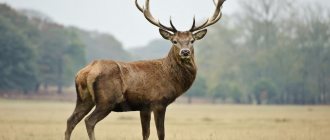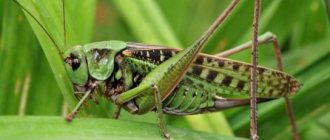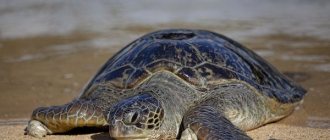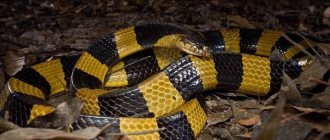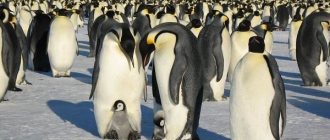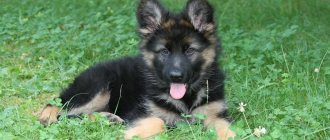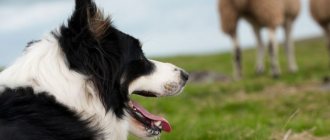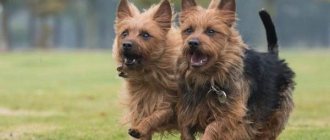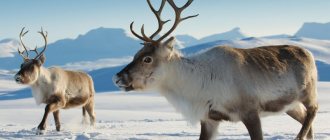- Antler
The antlered deer has taken a strong place both in human mythology and in various everyday jokes, because it is generally accepted to compare a man whose wife is cheating on him with a deer, or rather its antlers. This is obviously connected with the fact that when in the old days men went hunting (including deer), their wives met with lovers at that time, hence the expression “set antlers.” On the other hand, among Indian tribes, deer is considered a sacred animal. “If you meet a sacred deer in the forest, happiness and good fortune await you,” as many Indian legends say. And, of course, killing a deer was a grave crime for the American Indians, which, unfortunately, cannot be said about white people.
Description, structure, characteristics
Deer belongs to the chordates, artiodactyl mammals, of the cervid (deer) family. Our name for this animal, “deer,” comes from the ancient Slavic “elen,” as our ancestors called this slender animal.
The size of a deer differs depending on its species, for example, the height of a large reindeer is from 0.8 to 1.5 meters, body length is 2 meters and weighs 200 kg. While the small tufted deer is only 1 meter in length and weighs no more than 50 kg.
The red deer has the most slender body; it has a proportional build, a long neck, and a slightly elongated head.
The deer's eyes are yellow-brown in color and have deep tear grooves nearby.
Some deer boast thin, graceful legs, others have short ones, but all deer, without exception, have well-developed leg muscles, which also serves as a means of survival for them. It’s not for nothing that it is one of the twenty fastest animals in the world; the speed of a deer running away from predators can reach up to 55 km per hour.
A deer’s teeth are clear indicators of its age; based on the degree of wear (wearing down the fangs and incisors), a good zoologist can easily determine how old it is.
The skin of a deer is covered with hair, which can be either thin in the summer or thick and warm in the winter. The color of a deer's coat is usually tan, tan, gray or red.
Horns
The branched antlers of a deer, perhaps, deserve special mention, because this is the most noticeable decoration of this animal, which is possessed by all types of deer (with the exception of antlerless deer) and only by males. Female deer do not have antlers, but again with the exception of reindeer, in which both males and females have antlers (although female reindeer have antlers that are several times smaller in size than males).
Interesting fact: many species of deer shed their old antlers about once a year, and new ones immediately begin to grow in their place. Deer antlers consist of cartilage and are then overgrown with bone tissue; their growth rate largely depends on the deer’s nutrition; the more saturated it is, the faster its antlers grow.
Deer living in tropical and equatorial latitudes shed their antlers rarely (about once every few years) or not at all.
The horns of a deer serve, among other things, for protection and also for attack. You might ask, why would a peaceful herbivorous deer attack someone? In fact, male deer often have fights with each other over females, during which they actively butt heads with antlers; the female goes to the winner with the strongest antlers. Reindeer also use their antlers to dig up snow to get to moss, a lichen that serves as their favorite food.
Coloring
The coloring of most adult deer is traditional. The fur on the belly is lighter, and some species also have a white spot near the tail, which hunters call the “mirror.” The upper part of the body has a darker and relatively uniform color - within the gray-brown range (the brightest amber-yellow color is the barasinga).
However, not all deer lose their baby spots as they grow older. Axis, fallow deer and sika deer retain their spotted coloration throughout their lives. True, in the last two species the color darkens greatly in winter, and the spots can completely disappear.
From left to right: axis (NANazeer, wikipedia.org), fallow deer (B.Navez, wikipedia.org), sika deer (Jochen Ackermann, wikipedia.org)
This does not happen with Axis. It lives in warm India and is spotted all year round. Due to the lack of a cold season, the axis has time (to the envy of other deer) to mate several times within one year, and, accordingly, shed its antlers several times.
Nutrition
Since the deer is a herbivore, its diet depends on the places in which the deer lives, or more precisely on the vegetation of those places. Many deer eat
leaves, young shoots of trees, grass, branches of bushes, and also tree bark, which serves as a significant part of their diet. Deer will not refuse to eat ripe fruits of apples, pears, and various berries. Reindeer living in the tundra love to eat moss, which they dig out right from under the snow with their branched antlers.
What do deer eat
Deer are herbivores, eating plants, fruits, acorns and nuts. In the fall they will switch to grasses and evergreens. In winter, they eat any available food, such as fallen leaves, branches, bushes and other woody plants. Unfortunately, these foods are not nutritious and deer migrate south if the winter is long and cold.
What do fawns eat?
Fawns drink their mother's milk when they are born, then add solid foods such as grass, leaves and fruit to their diet.
Enemies in nature
Under natural conditions, a dangerous enemy of deer is
wolf bears, from which deer often manage to escape with the help of their muscular legs. However, a pack of wolves, especially one acting in a coordinated manner, can easily drive down an old or sick deer. Also a dangerous enemy of deer is the human hunter, who kills this amazing animal for the sake of its antlers, which he then hangs as a hunting trophy somewhere near the fireplace.
Difference from moose
Although moose and deer are close relatives and sometimes the moose is even mistakenly called the largest deer, there are a number of differences between them:
On the left is a deer, on the right is an elk.
Difference from roe deer
Roe deer, which are also part of the deer family, differ from the latter in a number of ways:
- The antlers of a roe deer do not have branches, like those of a deer.
- Roe deer, unlike deer, will never eat tree bark; otherwise, their diet is largely similar.
- There is a difference in feeding their offspring: if female deer feed their young while standing, roe deer do this lying down.
On the left is a deer, on the right is a roe deer.
Predators hunting deer
Wolves, bears, tigers, jaguars and pumas feast on deer. Deer have well-developed vision, smell and hearing, and they are always ready for danger. Speed and agility allow you to avoid collisions with predators. However, they also fight back, hitting predators with their feet rather than with their horns. Female moose are especially active in protecting their young and are dangerous to humans during this period.
Deer have a long mating season, lasting from October to January. During the rest of the year, males do not interact with females.
Types, photos and names
There are a large number of different types of deer in nature; below we will describe the most interesting of them.
Noble deer
The most beautiful representative of the deer family, has a slender body and proportional build. Under the tail of the red deer there is a characteristic white spot. The antlers of this species of deer are characterized by their signature branching. The red deer, in turn, is divided into several subspecies; its size depends on belonging to one or another subspecies, for example, a small Bukhara deer weighs about 100 kg and grows to 170-190 cm in length. While the subspecies of this deer is the maral , has up to 1.6 meters in length and weighs about 300 kg. The red deer lives over a wide geographical range and can be found in many European countries, China, North Africa, North and South America and Australia.
Reindeer
Also known as caribou. This deer, which lives in the northern regions, in the tundra, is distinguished by the fact that both males and females have antlers. And this is not just like that, the fact is that female reindeer need antlers for a practical purpose; with their help, they, like males, clear snow in order to get to the food, moss, and lichens located underneath. And besides this, reindeer are the only deer that eat meat, namely small rodents
lemmings living in the same places. The reindeer's body length is 1.9-2.1 meters, weight - 190 kg.
Water deer
Also known as the only antlerless deer. This is one of the smallest representatives of the deer family, its length is only 75-100 cm, and its weight is 9-15 kg. The water deer lives in the forest thickets of China and the Korean Peninsula. He is an excellent swimmer and can swim several kilometers, migrating between deltas of different rivers.
David's Deer
Also known as milu deer, it is a very rare species that was almost completely exterminated at the beginning of the last twentieth century. Now they are trying to restore their population again in the Chinese reserves where it lived before. It got its name from the French priest and naturalist Armand David, who was the first to describe this type of deer. It is of medium size, its body length is 140 cm, with a weight of 150-200 kg. An interesting feature of David's deer is its frequent change of antlers, which occurs twice a year. They also have an elongated, narrow head, which is atypical for other deer.
White-faced deer
This species of deer got its name due to its distinctive white coloration of the neck and front of the head. The antlers of this deer are also white. The length of the white-faced deer is 230 cm and weighs 200 kg. These deer live in the mountainous forests of Tibet and some Chinese provinces.
Tufted deer
It has a black-brown tuft on its head, hence its name. Another distinctive feature of this deer is its short and not at all branched antlers. These deer live in the forests of South and Southeast Asia.
White-tailed deer
Also known as Virginia deer, since the largest population of these deer lives in the US state of Virginia (although in addition to Virginia it lives in other US states and also in Canada). It got its name due to the characteristic white color of its tail. The length of the white-tailed deer is up to 1 meter and weighs about 150 kg.
pig deer
This deer received such a unique name for its unique manner of movement, somewhat reminiscent of the way a pig moves. The pig deer has a bushy tail. Males are darker in color than females. Lives in Pakistan, India, Thailand and other countries of Southeast Asia.
Dappled deer
The sika deer has beautiful white spots on its red fur, which give it its name. The spotted deer is medium in size, its length is 1.6-1.8 meters, with a weight of 95-112 kg. This species of deer lives in the Far East, in the central zone of the Russian Federation and in the Caucasus. Currently, due to population decline, it is listed as
Red Book.
Size
The largest representative of the deer is, of course, the elk , whose height at the withers can reach 2.5 m. It is not for nothing that the lanky guy is often called an “elk”, and a toast “to the elk” (“... so that he drank and ate, he wanted and could”) - one of the most popular.
Elk are generally difficult to confuse with other deer. In addition to its size, it is distinguished by a wide chest, a special growth on the throat (the so-called “earring”) and huge spade-shaped horns similar to a plow (for which it received the nickname “plow”). The only thing that spoils the solid “image” is the hook-nosed muzzle with an overhanging upper lip, giving the moose a somewhat phlegmatic and stupid appearance.
Elk Photo: USDA Forest Service, wikipedia.org
However, there is no point in mocking him. Elk is a formidable and dangerous opponent. There are known cases when he beat to death another “master of the taiga” - a bear - with his hooves. Therefore, predators usually try to drive the elk into dense thickets, where it could not kick...
And now let's move from the forests of the Northern Hemisphere to the mountain forests of the Southern Hemisphere - specifically in Chile. The smallest representative of deer still lives there, called pudu . In terms of its size (length - 80-93 cm, height - 30-35 cm, weight - 8-10 kg), an adult male pudu is inferior even to a newborn elk calf.
There are also smaller ungulates on the planet - deer . However, despite the name, zoologists do not consider them deer and classify them as a separate family - a kind of intermediate link between non-ruminants and ruminants. The Indonesian deer - the small kancil - reaches a height of only 20-25 cm.
Deer do not have antlers, but they do have fangs with which these tiny but brave animals are capable of biting furiously. And their habits are not entirely vegetarian - on occasion, a deer will gladly eat insects, fish, other animals and even carrion.
Pudu (photo: D. Gordon E. Robertson, wikipedia.org) and fawn (photo: Bjorn Christian Torrissen, wikipedia.org)
Reproduction
Deer lead a harem, polygamous lifestyle; the herd of these animals is led by a strong male who mates with several females. The same male deer protects his ladies from the encroachment of other competing males. In the fight for females, male deer stage real, almost knightly fights, clashing their antlers.
Deer reach sexual maturity early; by the age of two years, a female deer is able to give birth to cubs. Males become sexually mature at 2-3 years. The pregnancy of a doe, depending on the species, lasts 6-9 months. When the time comes for giving birth, the female looks for a cozy and secluded place for this purpose. Usually only one child is born at a time, only in rare cases can there be twins. Small fawns have a spotted color, which serves them as an excellent camouflage from predators.
Only after being born, a small fawn can already stand on its feet, and after another month of breastfeeding, it can already graze grass on its own, although it also continues to feed on its mother’s milk throughout the entire first year of its life.
After a year, the first small bumps on the head of young male deer begin to appear - future luxurious deer antlers.
Interesting Facts
- Deer antlers have healing properties in the treatment of hypertension and nervous diseases. Which, of course, is not good for the deer themselves, many species of which are already listed in the Red Book, as they are on the verge of extinction.
- Among many peoples and at different times, the deer was revered as a sacred animal, for example, the Mayan Indians sometimes even called themselves “deer people,” and the deer was considered their main tribal ancestor. Among the ancient Celts, the deer was considered a symbol of the Sun, fertility, vitality, and was personified with the god Cernun, whom the Celts depicted with deer antlers.
- Often the image of a deer can be found in medieval heraldry, where the deer symbolized grace and moderation.
Video
And finally, an interesting documentary about reindeer.
Author: Pavel Chaika, editor-in-chief of Poznavaika magazine
When writing the article, I tried to make it as interesting, useful and high-quality as possible. I would be grateful for any feedback and constructive criticism in the form of comments on the article. You can also write your wish/question/suggestion to my email [email protected] or Facebook, with respect, the author.
Author page
This article is available in English -
Deer.
Save Status
Reindeer are listed as vulnerable by the International Union for Conservation of Nature
(IUCN).
The IUCN Red List of Threatened Species states that reindeer are listed as vulnerable because their population has declined by 40% over the past 21 to 27 years. According to Encyclopædia Britannica
, there are currently about 3.5 million caribou in North America, about 1 million wild reindeer in Eurasia, and about 3 million domesticated reindeer in Northern Europe. ()
Live Science
Gulnara Dadabaeva
Science writer, professional zoologist and educator with over 10 years of experience working with students, scientists and government experts. Freelance author of the website “Knowledge is Light”.
